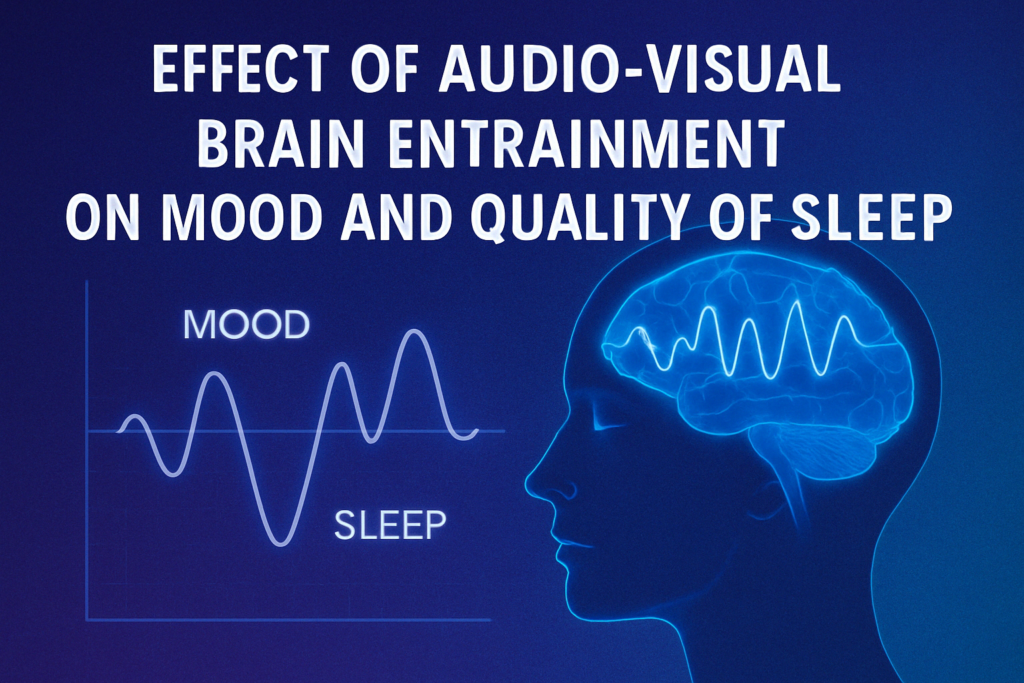Effect of Audio-Visual Brain Entrainment on Mood and Quality of Sleep: a pilot trial with university students
Daiana Cristina Salm1,2, Luiz Augusto Belmonte1,2, Bruna Hoffmann de Oliveira1,2, Luana Meneghini Belmonte1,2, Francisco J Cidral-Filho1,2, Patrick Porter3 and Daniel Fernandes Martins1,2
- Laboratory of Experimental Neurosciences (LaNEX), University of Southern Santa Catarina, SC, Brazil.
- PostgraduatePrograminHealthSciences,UniversityofSouthernSantaCatarina,SC, Brazil.
- Postgraduate Program in Integrative Medicine. Quantum University. Honolulu, HI, USA.
Objective
The Study Objective was to investigate the effect of the Audio-Visual Brain Entrainment (ABE) on Mood and Quality of Sleep of university students.
Methods
The study was conducted at the Laboratory of Experimental Neurosciences (LaNEX) at the University of Southern Santa Catarina (UNISUL), Brazil, and the protocol was approved by the Institutions Ethics committee. Informed consent forms were obtained during patient screening phase of the study at the site of the tests.
Sample size consisted of 7 university students (Four males and three females. Ages between 20 and 58), who were not making use of analgesics, anti-inflammatories or sleep aids 7 (seven) days prior to, as well as during the study, and who had no hearing disabilities. ABE was delivered with a BrainTap headset (New Bern – NC – USA; Figure 1, A & B) in 20-minute sessions 3 times a week for 6 weeks. Session consists of Binaural beats at 18 to 0.5 HZ, Isochronic Tones at 18 to .0.5 HZ and visual Entrainment through light- emitting diode lights at 470 nanometers (nm) flickering at 18 to 0.5 HZ. The following questionnaires were applied at baseline and after 6 weeks: Epworth Sleepiness Scale – Daytime sleepiness (ESS), Insomnia Severity Index (ISI), Pittsburgh Quality of Sleep Index (PQSI), Depression Anxiety and Stress Scale (DASS-21), and Perceived Stress Scale (EPS-10).
Results
ABE effectively reduced ISI (data not statistically significant); PQSI (p<0.05); DASS-21 (data not statistically significant); and EPS-10 (data not statistically significant). The participants reported feeling very relaxed during the sessions.
Conclusion
Despite the reduced sample size (n=7), results indicate that Audio-Visual Brain Entrainment (ABE) significantly increased Quality of Sleep of university students (PQSI p<0.05). A lager sample size study is necessary to confirm and extend the effects of ABE on Mood.

Figure 1 – Effect of Audio-Visual Brain Entrainment on Mood and Quality of Sleep. A) Epworth Sleepiness Scale; B) Insomnia Severity Index; C) Pittsburgh Quality of Sleep Index; D) Depression Anxiety and Stress Scale; E) Perceived Stress Scale. Data were expressed as mean ± standard deviation (SD) n = 7. Student’s T-test was used. *p<0.05 when compared with baseline evaluation. NS: not statistically significant.
